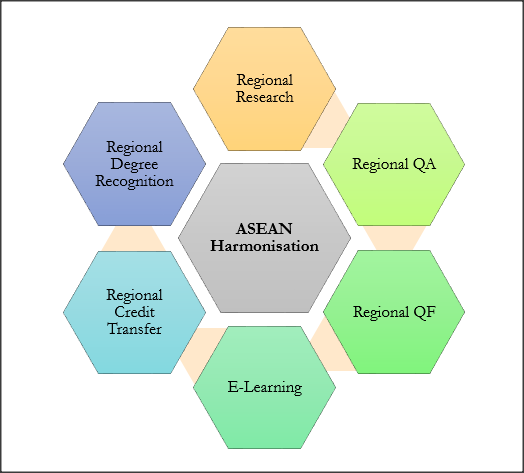A SHARE Regional Conference was held in Bangkok between 29th and 31st October 2018. One of the topics that I would like to share (no pun intended) here is Student Mobility.
For basic understanding, student mobility is movement of students between higher education institutions in different countries.
Many higher education institutions are trying to push forward their internationalisation level. Student mobility is considered the most visible part of internationalisation in higher education.
Some Statistics
Some interesting statistics were shown during the presentation. The number of Thai students that are currently studying in Malaysia is 946, whereas the number of Indonesian students currently in Thailand is 1,300. Many Thai students have gone to study in Malaysia. Why? Is it the quality of education? Malaysia has spent 1.69% of its GDP on education, compared with 0.7% in Thailand. The Malaysian number is actually higher than both Singapore and China.
Harmonisation
The SHARE Regional Conference, mostly run by EU personnel with an aim of bringing ASEAN universities together in order to enhance the quality of education in the region, suggested that harmonisation was needed. In other words, universities within ASEAN would have to establish regional research, regional QA, regional qualification framework, e-learning, and most importantly, regional credit transfer system as well as degree recognition. Without them, student mobility within ASEAN would never work, the speakers of the conference said.

Horizontal Collaboration vs Vertical Collaboration
Furthermore, the speakers suggested that ASEAN universities should look more seriously at horizontal collaboration rather than vertical collaboration. Most ASEAN universities tend to look at vertical collaboration which means collaboration with universities outside the region. The main objective of such collaborations is for reputation and increasing global ranking. On the other hand, horizontal collaboration or collaborations with other universities within the same region is often overlooked. Therefore, the SHARE Regional Conference key persons suggested that ASEAN should push for intra-region collaboration before looking for partners outside the region.
Does mobility need to be physical?
One question that was raised during the presentation of the topic was whether or not mobility needed to be physical. There were two answer to this question. The first was “yes” for international experiences. The second was “no” if you only cared about the course content.
Summary
On the whole, for student mobility to become a success, the speakers of the session stated that there must be participation and concerns building at the national level. Harmonisation process must be the real vision for regional integration.

One thought on “Way towards Successful Mobility – Regional Harmonisation”
Comments are closed.